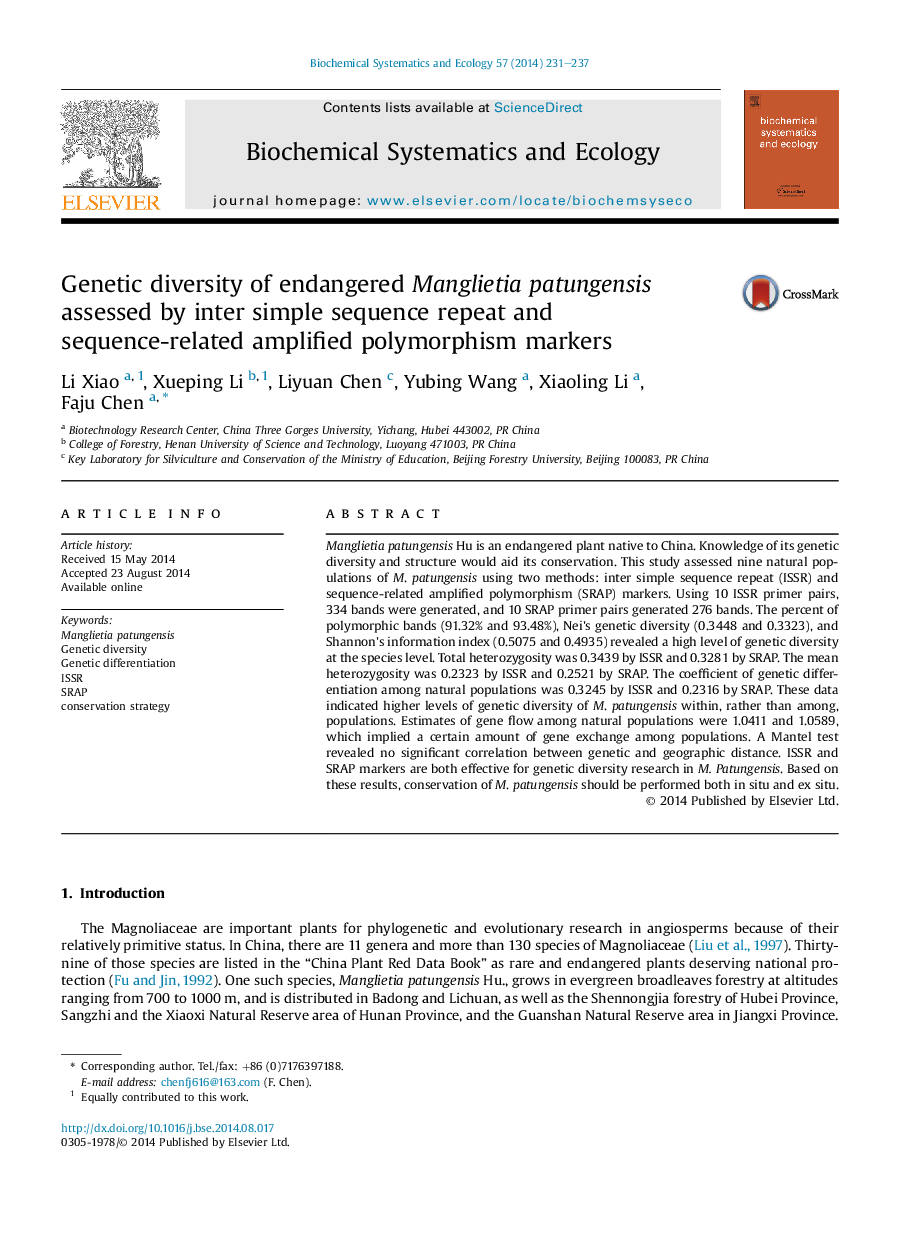| Article ID | Journal | Published Year | Pages | File Type |
|---|---|---|---|---|
| 7768423 | Biochemical Systematics and Ecology | 2014 | 7 Pages |
Abstract
Manglietia patungensis Hu is an endangered plant native to China. Knowledge of its genetic diversity and structure would aid its conservation. This study assessed nine natural populations of M. patungensis using two methods: inter simple sequence repeat (ISSR) and sequence-related amplified polymorphism (SRAP) markers. Using 10 ISSR primer pairs, 334 bands were generated, and 10 SRAP primer pairs generated 276 bands. The percent of polymorphic bands (91.32% and 93.48%), Nei's genetic diversity (0.3448 and 0.3323), and Shannon's information index (0.5075 and 0.4935) revealed a high level of genetic diversity at the species level. Total heterozygosity was 0.3439 by ISSR and 0.3281 by SRAP. The mean heterozygosity was 0.2323 by ISSR and 0.2521 by SRAP. The coefficient of genetic differentiation among natural populations was 0.3245 by ISSR and 0.2316 by SRAP. These data indicated higher levels of genetic diversity of M. patungensis within, rather than among, populations. Estimates of gene flow among natural populations were 1.0411 and 1.0589, which implied a certain amount of gene exchange among populations. A Mantel test revealed no significant correlation between genetic and geographic distance. ISSR and SRAP markers are both effective for genetic diversity research in M. Patungensis. Based on these results, conservation of M. patungensis should be performed both in situ and ex situ.
Related Topics
Physical Sciences and Engineering
Chemistry
Organic Chemistry
Authors
Li Xiao, Xueping Li, Liyuan Chen, Yubing Wang, Xiaoling Li, Faju Chen,
